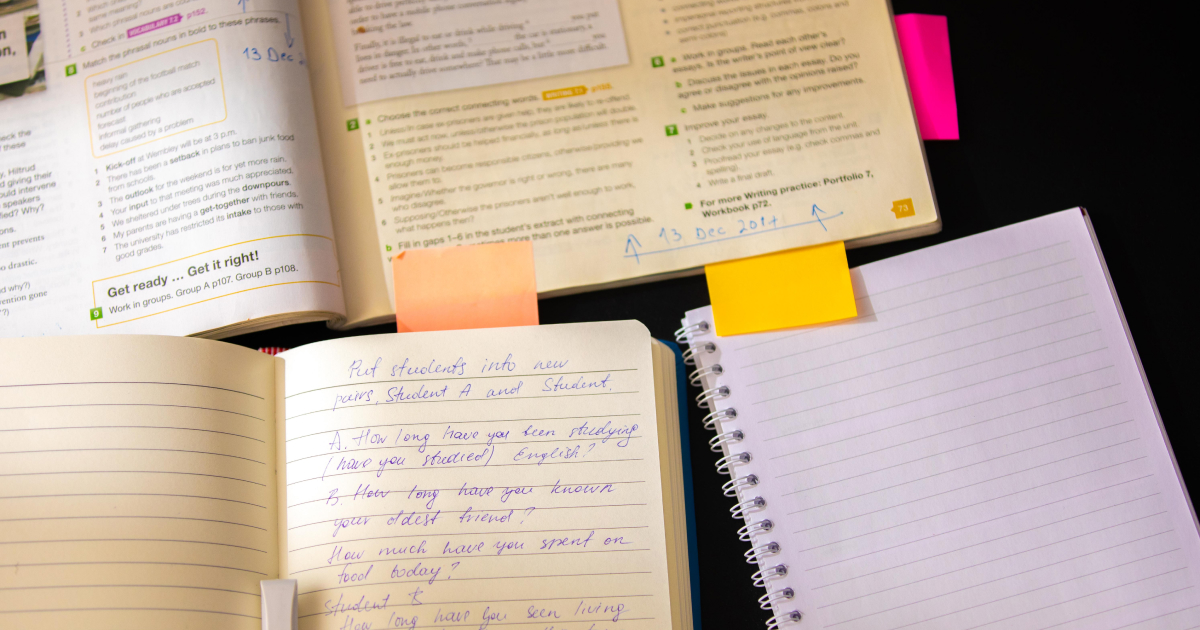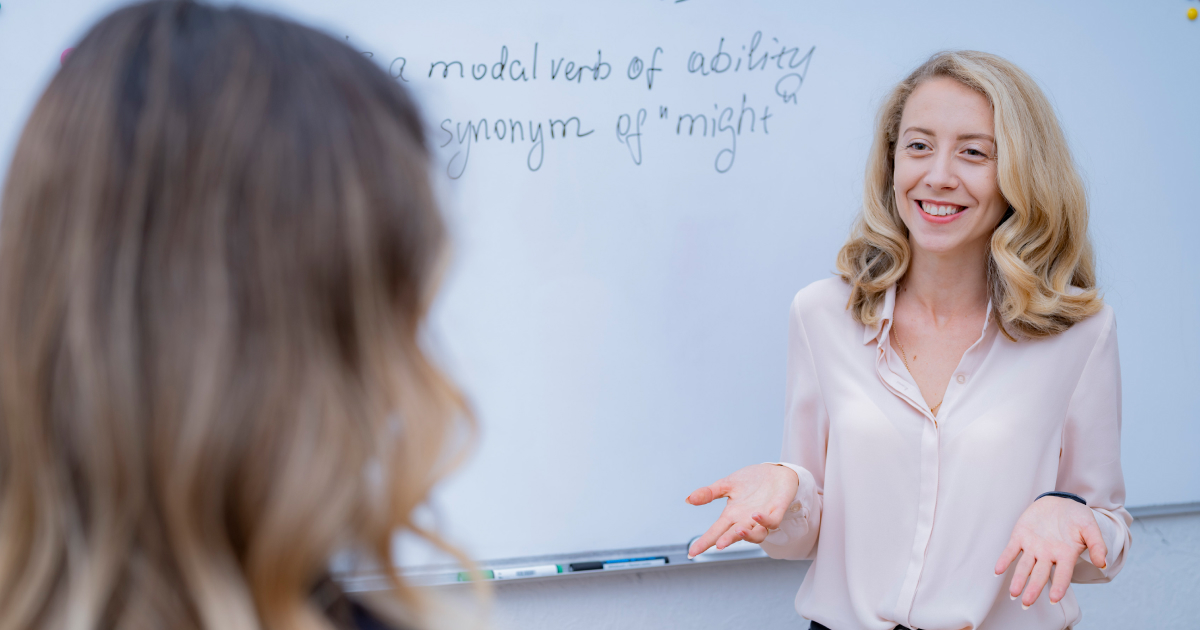What should your learners know about IELTS Reading?
- Reading
- IELTS
- Tips & Strategies
- Methodology

19.07.2023
I am sure that at some point in our lives, anyone may find themselves bored with the lesson. But why do we feel this way sometimes? Is it about long lectures and zero interaction with you as a listener? Is it about learning unrelatable things or doing repetitive tasks? Well, the reasons might be different but the main reason is always the same: when we face some of the situations listed above we actually deal with school-centered/ teacher-centered classrooms. But what is that? And how is it different from a student-centered classroom? Let’s see.
The teacher-centered or school-centered classroom is also known as the traditional method of instruction and teaching.
The so-called old or traditional method suggests that the teacher is the most active and engaged person in the classroom while students just passively receive or recreate some information stated by the teacher. In this case, students seldom take initiative or have space to actually interact with the material (students listen, take notes, give brief answers, act or speak only if they are told to do so) which has a huge influence on the motivation and therefore the general level of performance and results.
Moreover, teachers in teacher-centered classrooms may often choose to use instructional strategies that are the most familiar, comfortable, or easiest for them, even when doing so may not be the best option for all the students.
It is needless to say that school or teacher-centered classrooms have proved themselves to be not effective and often limiting.
That is why student-centered classrooms were introduced as an alternative.
Tips to spark students' motivation!
The main idea of a student-centered classroom is giving students more control over the process of studying which leads to the shift of the focus from teachers to learners.
Student-centered classrooms are created to be engaging, through-provoking, inspiring, motivating, and challenging. Students are encouraged to speak out, debate, create and discover things rather than simply listen and note the answers that the teacher gives. In this way, learning becomes more interesting and much more productive as students not only become active participants in the process but even real leaders. Of course, the performance in such classes is much higher, so no wonder that more and more professionals decide to gradually implement this approach in their environment.
| Teacher-centered classroom | Student-centered classroom |
| didactic | less intrusive |
| direct instructions | discovery learning inquiry-based learning |
| expository teaching | implicit |
| focus is on the teacher | focus is on the student |
the teacher is responsible for all the processes in the classroom (managing, assessing etc.) | students work with their classmates, obtain information using technology, and take much more responsibility for their education. |

Create plans that will boost your learners' achievements
Improve your skills with our course!We have already mentioned some benefits but are there any other things that make student-centered learning so appealing? Let’s see.
The variety of tasks, implementation of modern technology, gamification, and usage of up-to-date materials which are fun and relatable undoubtedly make lessons much more engaging.
First and foremost, the people who we teach are not only students but also humans who have their own interests, emotions, and reactions. Student-centered learning states that all of these things can and must be used for the benefit of the studying process.
Secondly, the level of engagement tends to be higher if the student accepts the position of control instead of a teacher (peer checking, project presentation etc.)
Finally, the topics in a student-centered classroom can be easily customized according to especially interesting or actual pieces of information which increases the level of enthusiasm in learning languages and contributes to a much more positive attitude.
Make your lessons more engaging!
Student-centered learning not only positively affects the general performance of the students and the atmosphere in the classroom but also helps with developing essential life skills when it comes to young learners.
A lot of team activities help with improving cooperation and communication skills while discovering things using the teacher’s guidance rather than listening to “ready” facts positively influences the ability of independent thinking and learning.
Moreover, students try to take leadership roles, solve problems and develop cause-effect relationships.
A great amount of team tasks are proved to be more effective for bonding and developing a friendly atmosphere in the classroom while teacher-centered learning is usually based on competing with each other for the best results which is often a cause of a rather unhealthy working environment.
Interesting studying process may have even more long-term effects. Students get used to the idea that learning new things is not about boring textbooks, repetitive tasks, endless lecturing and generally being burdened with duties.
Student-centered learning ensures that studying is an integral part of our everyday life and it can be one of the most interesting parts of it too.
All in all, making your students leave your classroom with the love of learning new things feels like an accomplishment for any teacher.

There are plenty of strategies to transform your classroom from a teacher-centered space to a student-centered one. Here are some of the most popular ways to do this.
Since the goal of the flipped classroom method is to encourage your students to elaborate on topics covered outside the class, it is a very effective way to create a student-centered environment.
In a nutshell, teachers can introduce a subject before the session, for example, with the help of reading or audiovisual resources. After that, they can divide the class into groups and begin brainstorming the key points of the lesson. After that teacher proceeds with the lesson using the students’ ideas.
Maybe they wish to continue talking about the key ideas presented in the reading; perhaps they wish to conduct research on one of the lesson’s focal points; it is also possible that they are interested enough to produce a unique work or even a piece of art, like a video.
You never know and that makes the process interesting not only for the students but for the teachers as well while students gradually discover the topic in a way that is interesting for them.
PBL might be viewed as a developing trend among teachers.
Along with being very collaborative, this approach enables students to engage in practical tasks that they can design themselves, making them the main characters of the lesson.
All that needs to be done is give a broad question that allows students to focus and develop some original ideas. The more physically and cognitively involved the students are, the better. The work may be centered around creating a poster, a theater performance, or their own menu — anything goes as long as students use the new material in a unique and unforgettable way.
Learn more about guided discovery!
During the era of technologies, the use of information and communication technology in educational settings (ICT) is a must. It is not a secret that students enjoy playing games and using well-designed online resources as it is always much more engaging than an ordinary textbook. In addition, a lot of ESL resources for teachers have got some ready-to-use templates that suit perfectly for any student-centered classroom.
This strategy suggests breaking larger topics into smaller pieces and assigning each of them to the members of the team (usually up to five people). They are supposed to conduct independent research on their piece and combine the information they have found out with all the others. In this way, each team gets to present their big topic and every member takes turns talking about their piece.
Needless to say that this activity makes students really remember the material as well as actively interact with it.
Also, it usually turns out to be fun and empowering too.
As for online teaching, a lot of teachers find this way of working limiting while in reality, the modern technologies with their endless resources for gamification and recreating basically anything into a fun online game are extremely suitable for student-centered learning.
Group work is also possible with the help of the breakout rooms feature that allows teachers to divide students in groups and observe their work by migrating from one room to another.

Nothing is perfect though, so there are some potential negative aspects.
The difficulty of implementing student-centered learning in large classes is one possible disadvantage. When it comes to young learners, some kids might require more direction and structure than what is offered in a student-centered learning environment, which is absolutely normal but at the same time might be a struggle.
Overenthusiasm and fun may often result in much noisier and chaotic space which should be attentively observed and guided.
Plus, at the beginning of studying instructions might take more time until students learn how to act in this or that situation.
As we can see, a student-centered classroom is a key not only to a better performance but also a much more useful and memorable learning experience overall. And if you are still wondering whether to give it a try, this is your sign to do it!
What kind of learning has proven to be more effective?
It is impossible to make an online classroom student-centered.
Student-centered classroom helps students to develop a lot of useful soft skills too.
Arina Kravchenko
Author
Teacher of General English & IELTS
Comments
Leave your comment